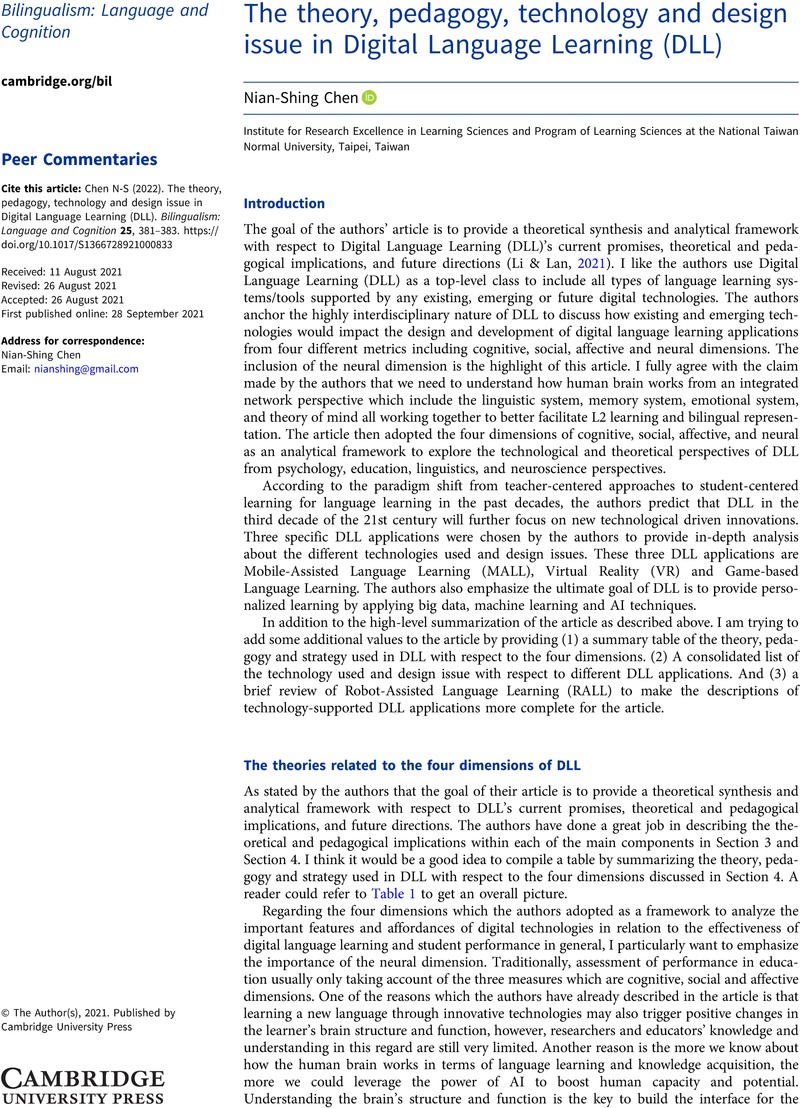Crossref Citations
This article has been cited by the following publications. This list is generated based on data provided by Crossref.
Li, Ping
and
Lan, Yu-Ju
2022.
Understanding the Interaction between Technology and the Learner: The Case of DLL.
Bilingualism: Language and Cognition,
Vol. 25,
Issue. 3,
p.
402.
Zhang, Ruofei
Zou, Di
and
Cheng, Gary
2024.
A review of chatbot-assisted learning: pedagogical approaches, implementations, factors leading to effectiveness, theories, and future directions.
Interactive Learning Environments,
Vol. 32,
Issue. 8,
p.
4529.
Khazaie, Saeed
and
Derakhshan, Ali
2024.
Extending embodied cognition through robot's augmented reality in English for medical purposes classrooms.
English for Specific Purposes,
Vol. 75,
Issue. ,
p.
15.
Bayaga, Anass
2025.
Epistemic Network Analysis: Artificial Intelligence Systems, Linguistic Tools, and Pedagogical Practices Pathways.
p.
1.
Khazaie, Saeed
Derakhshan, Ali
and
Karbasi, Mojtaba
2025.
Handbook of Teaching and Learning Persian as a Second Language.
p.
1.
Khazaie, Saeed
Derakhshan, Ali
and
Karbasi, Mojtaba
2025.
Handbook of Teaching and Learning Persian as a Second Language.
p.
711.
Suadi, Suadi
Siregar , Ayu Meita Puteri
Arwin, Arwin
and
Majid, Ikhwanuddin Abdul
2025.
The Utilization of Digital Technology for English Literacy Improvement in Islamic Senior High Schools.
International Journal of Social Learning (IJSL),
Vol. 5,
Issue. 3,
p.
590.


